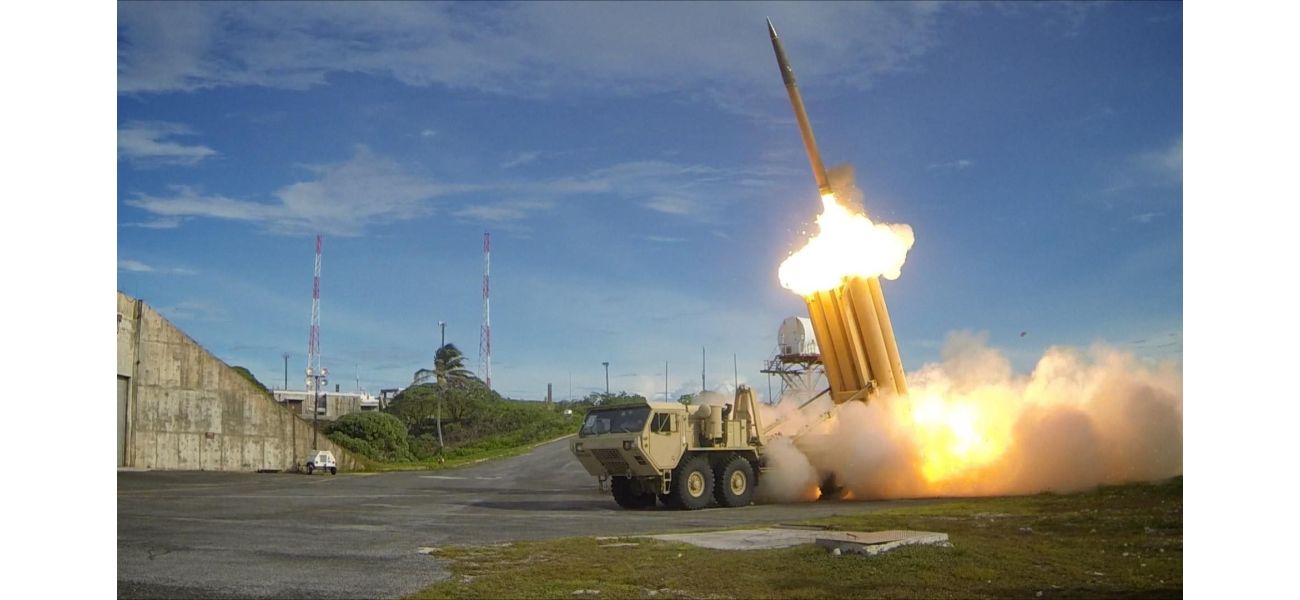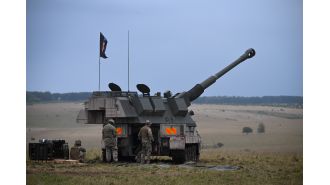The US is deploying the THAAD anti-missile system in Israel.
US troops in Israel have received a new anti-missile system from the United States.
October 16th 2024.

The new anti-missile system, called Terminal High-Altitude Area Defense (THAAD), has been deployed by the United States to Israel. This highly advanced system uses radar and interceptors to defend against short, medium, and intermediate range ballistic missiles. It is operated by a team of 95 soldiers, along with six truck-mounted launchers, 48 interceptors, and one radar system and communications center. The cost of this technology ranges from $1 billion to $1.8 billion USD. Similar systems have also been sent to other regions, such as South Korea, according to a report by the Congressional Research Service.
The deployment of THAAD to Israel has caused some concern, as it will involve US troops on the ground in Israel. This begs the question, why has THAAD been sent to Israel? There are two possible reasons for this decision. The first is the possibility of an attack from Iran, as tensions between the two countries have been escalating. Just recently, Iran launched a silo of missiles towards Israel, prompting a strong warning from Israeli Prime Minister Benjamin Netanyahu that they will retaliate against any attack. THAAD could help intercept any missiles fired back from Iran in such a scenario.
Another reason for sending THAAD to Israel could be to strengthen their aerial defense. Currently, Israel has three air defense systems in place, but if faced with a large-scale missile attack, these systems may not be enough. THAAD could fill this gap and provide additional protection for the country.
The potential for conflict between Israel and Iran has been a recurring theme, especially since the ongoing war in Gaza began. The two nations have a history of engaging in a shadow war, using espionage and proxies to fight each other. However, tensions reached a new level when Israeli airstrikes in Damascus, Syria, killed senior Iranian military commanders and a member of Hezbollah. This prompted a retaliation from Iran in the form of 300 drones and missiles fired towards Israel. Fortunately, most of these were intercepted by Israel and its allies before any damage could be done. In response, Israel launched drone attacks on various locations in Iran, including Isfahan, a key location for their nuclear program.
There have also been reports that Iran is preparing to launch ballistic missiles that could reach Israel in just 12 minutes. This has caused concern among US officials, who have warned of severe consequences. In response, the US has been actively supporting Israel's defensive preparations. Israeli Prime Minister Netanyahu has also reached out to Russian President Vladimir Putin for help in stopping the predicted attack. Despite efforts from their allies to urge restraint, both in Gaza and Lebanon, the conflict continues to escalate.
Analysts have downplayed the potential impact of any Iranian retaliation, stating that it is unlikely to significantly impact the outcome of the conflict. However, there is still a concern that these actions could disrupt current Israeli operations in Lebanon. The Institute for the Study of War also believes that any attempt by Iran to intervene in the conflict would not be successful.
In conclusion, the deployment of THAAD to Israel serves as a precautionary measure against potential attacks from Iran. It also helps to strengthen Israel's aerial defense and bridge any existing gaps. Tensions between the two nations continue to rise, and the risks of a direct conflict cannot be ignored. It is crucial for all parties involved to exercise restraint and seek peaceful resolutions to prevent further escalation of the situation.
The deployment of THAAD to Israel has caused some concern, as it will involve US troops on the ground in Israel. This begs the question, why has THAAD been sent to Israel? There are two possible reasons for this decision. The first is the possibility of an attack from Iran, as tensions between the two countries have been escalating. Just recently, Iran launched a silo of missiles towards Israel, prompting a strong warning from Israeli Prime Minister Benjamin Netanyahu that they will retaliate against any attack. THAAD could help intercept any missiles fired back from Iran in such a scenario.
Another reason for sending THAAD to Israel could be to strengthen their aerial defense. Currently, Israel has three air defense systems in place, but if faced with a large-scale missile attack, these systems may not be enough. THAAD could fill this gap and provide additional protection for the country.
The potential for conflict between Israel and Iran has been a recurring theme, especially since the ongoing war in Gaza began. The two nations have a history of engaging in a shadow war, using espionage and proxies to fight each other. However, tensions reached a new level when Israeli airstrikes in Damascus, Syria, killed senior Iranian military commanders and a member of Hezbollah. This prompted a retaliation from Iran in the form of 300 drones and missiles fired towards Israel. Fortunately, most of these were intercepted by Israel and its allies before any damage could be done. In response, Israel launched drone attacks on various locations in Iran, including Isfahan, a key location for their nuclear program.
There have also been reports that Iran is preparing to launch ballistic missiles that could reach Israel in just 12 minutes. This has caused concern among US officials, who have warned of severe consequences. In response, the US has been actively supporting Israel's defensive preparations. Israeli Prime Minister Netanyahu has also reached out to Russian President Vladimir Putin for help in stopping the predicted attack. Despite efforts from their allies to urge restraint, both in Gaza and Lebanon, the conflict continues to escalate.
Analysts have downplayed the potential impact of any Iranian retaliation, stating that it is unlikely to significantly impact the outcome of the conflict. However, there is still a concern that these actions could disrupt current Israeli operations in Lebanon. The Institute for the Study of War also believes that any attempt by Iran to intervene in the conflict would not be successful.
In conclusion, the deployment of THAAD to Israel serves as a precautionary measure against potential attacks from Iran. It also helps to strengthen Israel's aerial defense and bridge any existing gaps. Tensions between the two nations continue to rise, and the risks of a direct conflict cannot be ignored. It is crucial for all parties involved to exercise restraint and seek peaceful resolutions to prevent further escalation of the situation.
[This article has been trending online recently and has been generated with AI. Your feed is customized.]
[Generative AI is experimental.]
0
0
Submit Comment





